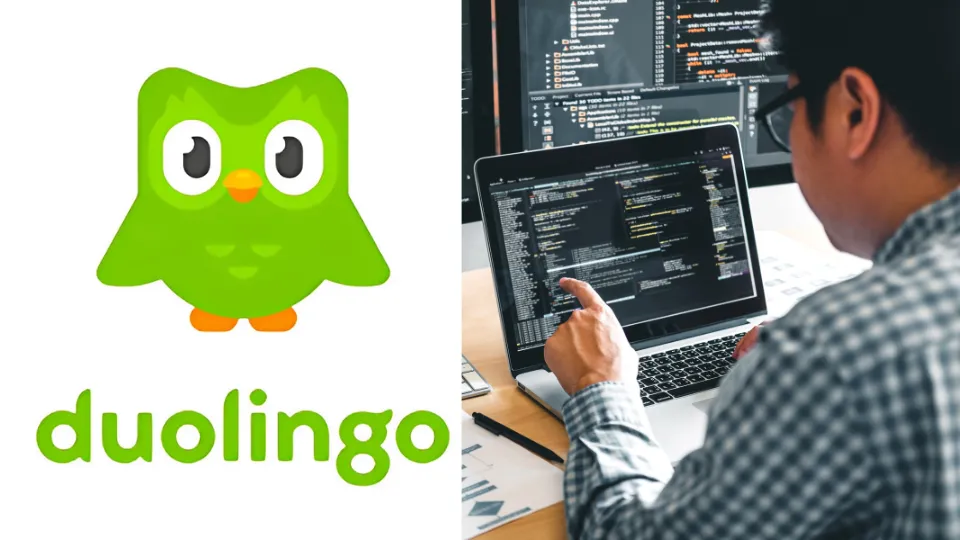Currently, technology is making people seek for more engaging and easy to use language learning solutions. Leading a market in language learning apps, Duolingo has become a gold standard for entertainment and efficiency.
To help anyone interested in developing an app similar to Duolingo, this guide will also explain the steps, features, and approximate costs of developing the language learning app.
Are you ready to begin your second Mobile app? Here are the best app developers to help us create your perfectly designed customized app. Contact us now!
1. Identify trends in the Language Learning App Market
While the global trends related to language learning apps continue surging into the future, they expose further expansion with users in increasing their engagement with apps for language learning. Duolingo proved that people are ready for freestyle and game-based language learning. Since the dimension of mobile use increased, language apps remain popular and address students around the globe. If you want to break into this promising market, this is the right time to think about language learning app development.
2. Main Functionalities of Language Learning Applications
When planning on the development of Duolingo app functionalities, concentration should be made on the production of functions that will be entertaining while at the same time delivering optimum results and being easy to use. Here are some essential language app features to include:
-
Onboarding and User Profile Setup: Allow the user to establish goals, language, and learning preferences as well as the learning level.
-
Gamification Elements: Users should be motivated using streaks, badges, and a couple of leaderboards.
-
Lesson and Quiz Modules: These tutorials include structured lessons with quizzes at the end that allow for retention of materials learned as well as mastery of new materials at every session.
-
Speech Recognition: Enables users to interactively learn the correct intonation patterns, which are very important components of a language.
-
Vocabulary and Grammar Practice: Teach and use additional mime plays, such as flashcards, sentence construction, and other drill-like activities to reinforce language development.
-
Progress Tracking: Inform the users of the progress achieved since this will help to motivate them and in the process make the options selected more personalized.
-
Social Features: Social sharing and friend challenges should be used for competitive learning.
-
Push Notifications: Inform the users to get back on track and consolidate the knowledge gained daily.
The features of language learning apps such as Duolingo contain all facets, which distinguish the process of learning with pleasure and interest, so, the user is involved during the whole process.
3. Technology Solution for Language Learning Mobile Application
This empowerment enables the development of the functionalities of the Duolingo app by selecting of the right tech stack. Consider the following recommendations:
-
Frontend: Either end up accepting React Native for the true react native experience or Flutter for the native look-alike user experience.
-
Backend: There are different options, which are Node.js or Django, for handling server-side operations.
-
Speech Recognition API: The tool can also be Google Speech API or Apple Speech Framework for patterns of pronunciation.
-
Database: Firebase or MongoDB would be the best for handling user management, tracking, and content storage.
-
Analytics: Google Analytics or Firebase Analytics are your best tools for tracking user engagement and optimizing your app.
The components explained above are synthesizable into the language learning application to ensure high performance, scalability, and adherence to market standards.
4. How To Build An Application Similar To Duolingo
It was shown that creating a language learning app needs to be done in a very methodical way. Here’s a roadmap for your Duolingo app development guide:
-
Market Research and Planning: Define the specific user base you want to attract and then the language, optional features, and appearance.
-
UI/UX Design: The structure and design of an interface should be as simple as possible, easy to understand, and as visually appealing as possible.
-
MVP Development: This should begin with a minimum viable product (MVP) that will consist of those primary components of the language app such as lessons, quizzes, and users’ profiles.
-
Speech Recognition and Gamification: Apply game principles and speech recognition as the major functions to enhance the interactivity of learning.
-
Testing and Quality Assurance: The app must be free from bugs and must function well on any device that it is installed.
-
Launch and Marketing: Launch your app and then use advertising to go out looking for the learners.
If you follow this Duolingo app development guide, you will know how to develop an application for learning languages with the necessary characteristics users want.
5. Monetization Strategies
It will then be monetized, thereby reinventing the cost of making the language learning application actual and further improving it. A few are common, such as:
-
The Freemium Model: It's interesting that the segregation of free and paid services lies in very minimal functionality to one and restricted access to the other.
-
Subscription Plans: Using some of your content charging your users monthly or yearly for accessing the special services.
-
In-App Ads: Free users should also run display ads but be careful with how you do it so that you do not irritate or demotivate your users.
-
One-time purchases: Some of the perks are for a lifetime, including extra lessons, and cost a certain fee.
The idea is to have partnerships and affiliate programs with any other brands or education-related businesses so more income-generating techniques can be available.
All of these models can make money with the value that all of the users derive from your application.
6. Cost to Create an App like Duolingo
It might cost at least $5000 up to $ 50,000 to create an application like the language learning application Duolingo, but it all depends on additional functions, complexity level, and the region of developers. Here’s a rough breakdown:
-
Basic App with Essential Features: $20,000 - $40,000
-
Mid-Level App with Gamification & Speech Recognition: $40,000 - $80,000
-
Advanced App with Customization and AI-Powered Features: $80,000 - $150,000+
One way to do this is by understanding that the cost which is involved in the development of Duolingo can be greatly controlled through the development of an MVP with features being grouped according to the importance of being scaled with time.
7. Difficulties In Developing An App For Learning Languages
Creating a language learning app comes with unique challenges, such as:
-
Content Quality and Structure: Thanks to this skill, make sure the lessons provided are topic-wise complete, exciting, and developed according to users’ levels.
-
User Retention: Language learning apps are still quite new; the use of gamification as well as constant app updates keeps the users engaged.
-
Complexity of Speech Recognition: To provide feedback about the correct pronunciation involved a rigorous speech recognition system.
-
Localization for Multiple Languages: Localizing the app for specified languages and cultures is a delicate process including a lot of investigation and trials.
Approaching such challenges has to be done carefully: resolving them will contribute to creating successful apps, such as Duolingo.
8. Feedback and Launching of Your App
One must do pre-launch testing on the different devices to be used to ensure that performance is standardized. Beta-testing can be used to gather user feedback as well as to find out whether any changes are needed. However, after the app has been developed and launched, it should be subjugated to constant updates based on the users’ feedback.
If a language learning application is developed and launched with a basic good groundwork and feasible marketing strategies, then the market could be easily captured.
See Also: Wonderful Tips to Design an Excellent Landing Page
Looking for ways to advance your Mobile application development? We have expert app developers who will ensure that your app suits your needs as you need it. Get started with us now!
Conclusion
Creating a language learning application that resembles Duolingo is an opportunity in an already growing market. Using highly desirable trends, and needs of users, and applying gamification, options of speech, and interactive components, one can design a successful application. Having chosen the right technology stack, a monetization model, and knowing the cost to build a language learning app, you can acquire an outstanding application.
Are you more focused on creating a language-learning application? We can help with every step of the process, helping your final app to be both useful for users and a pleasant surprise for them. It’s good to start building your vision now!
Contact WebOConnect today for solutions on how your mobile app can generate revenue as soon as you’re ready to start making money.
FAQs:
Q1: How much would it cost to create Duolingo like language learning applications?
A1: The price ranges from $20000 to $150000 respectively for features, complexities and region of development.
Q2: What should not be missing in language applications?
A2: These are: gamification, speech recognition, progress bar, lessons, quizzes, and easy-to-understand welcome message.
Q3: How long does it take to create such an application as Duolingo?
A3: On average, app development may take between 3 to 9 months if the application is built from the ground up.
Q4: To what extent can gamification be incorporated to language learning apps?
A4: Application of game elements increases the use of your product, the engagement, and persistence of consumers, as learning becomes fun.
Q5: What criteria should be useful when selecting the appropriate tech stack of a language learning application?
A5: Choose the tools which allow to create scalable, game-like and interactive application: React Native, Node.js and Firebase.

_thumb.webp)
_thumb.webp)
_thumb.webp)

_thumb.webp)













